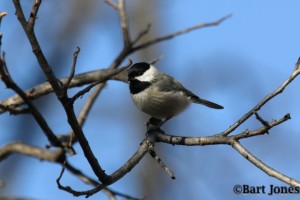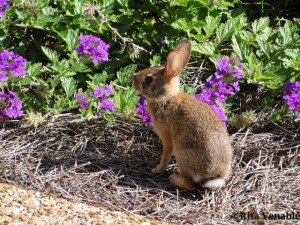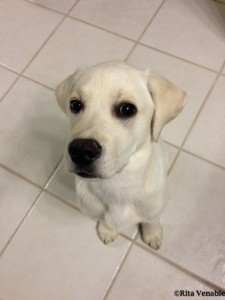
“Home Range” is the December essay from A Sand County Almanac, where Leopold calculates home ranges of animals on his 150-acre farm via his own thoughtful observations.
The wild things that live on my farm are reluctant to tell me, in so many words, how much of my township is included within their daily or nightly beat. I am curious about this, for it gives me the ratio between the size of their universe and the size of mine, and it conveniently begs the much more important question, who is the more thoroughly acquainted with the world in which he lives?
Leopold did not mention just how big his universe was compared to the universe of the animals on his land, but I suspect his knowledge of sun, moon, stars, and the Earth itself was quite a bit larger than the awareness a chickadee might have of Mars. In contrast, he asks the rhetorical question: Did he or the animals know more about their home range—where life is lived—the creatures of field and forest or he who slept under predictable shelter, had a good breakfast each day, and did not face predators around each corner?
The chickadee, rabbit, and deer that dwelt on his property left signs of their presence allowing Leopold to track and decipher where they went.
The fresh tracks of three deer, clear in yesterday’s snow, pass through our woods. I follow the tracks backward and find a cluster of three beds, clear of snow, in the big willow thicket on the sandbar. I then follow the tracks forward; they lead to my neighbor’s cornfield…then lead back, by another route, to the sandbar…My picture of the night’s routine is complete. The over-all distance from bed to breakfast is a mile.
My husband and I used see deer strolling in the front yard en route to our organic Vegan restaurant in the back. Once we found a fawn in our garage. We no longer see deer here, however, since we erected a six-foot iron fence.
Bunnies, however, still visit. Even if we could track them with such detail as Leopold tracked the deer on his farm, the rabbits would not give this a gnat’s hair width of worry. Years ago, they collectively applied for a grant through the Bill and Melinda Gates Foundation and were selected as recipients of the sustainable urban wildlife award. Nothing can touch them.

You see, people in our neighborhood keep their dogs and cats on leashes or inside the house. Therefore, zero cats forage on bunnies, which are found on the ground, in other people’s yards. Since dogs are required to be on leashes when outside their yards, they are not free to pursue rabbits. They do, however, bark at people and other dogs—their vehemence in indirect proportion to their size.
Many people in our subdivision have “privacy fences” which are made of wooden boards placed close together to block the view of neighbors while you grill out with your friends and family. Rabbits can easily dig under such fences, but dogs don’t. Other neighbors have black metal fences with bars. Rabbits go from home to home eating young shoots of fresh native plants and garden vegetables with aplomb. If pursued by the family dog, they simply run outside the fence probably hoping the pursuer will clonk its head on the fence. None of the fences keep rabbits at bay. Therefore, with no domestic predators, rabbits are overpopulated in our neighborhood. Some of our neighbors put out food for them which only makes matters worse.
I have even seen rabbits so bold as to mate in the street on our cul-de-sac.
Argo, always searching for new career leads, decided to give rabbit chasing a try. Though he likes having them around—their poop adds variety to his diet—he deep down suspects he is supposed to banish them from our yard. Perhaps he has duly noted that I often chase them with a broom when they come around eating the plants that have survived the cutworms. Not surprisingly, Leopold’s dog also pursued rabbits.
The dog, being no hand with an axe, is free to hunt while the rest of us are making wood. A sudden yip–yip–yip gives us notice that a rabbit, flushed from his bed in the grass, is headed elsewhere in a hurry…this rabbit is familiar with all of the ground between his bed in the meadow and his blitz-cellar under the woodpile. How else the beeline?
Of course, our rabbits know how far Argo can go, so, snickering as they hop, they also make a bee line through the metal fence and off to a shrub on the other side.
This is probably why the great horned owls are in our neighborhood—to eat rabbits. I have seen a red fox and several others have, too. It is the “Bigfoot” of our neighborhood—no one has definitive photos, but we all know it’s out there somewhere. The owl and the fox will not necessarily win popularity contests—some people are afraid their small dogs will become prey. This, hopefully, won’t happen for I love the sound of the great-horned owls at twilight and cherish the job that they do in controlling the rabbits.
Leopold explains his occasional difficulty in decoding natural signs as “the chit-chat of the woods is sometimes hard to translate.” Probably, the chit-chat of our small back yard is easier to hear than that of Leopold’s 150 acres. If Leopold’s land was like reading “War and Peace,” ours is more like flipping through “Pat The Bunny.” Still, the rabbits here had better beware—they may happily hop off to escape a teenager such as Argo, but a fence is no obstacle to a great-horned owl and I for one would like to offer our yard as restaurant to this special guest.
Table for one? Right this way…
